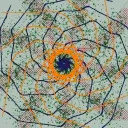deleted by creator
jorge
- 8 Posts
- 149 Comments
è l’ora del martello

 5·5 months ago
5·5 months agoAh yes, teams as valuable as FIRST-Judd Racing, true legends of motorsport

 9·5 months ago
9·5 months agoAlways has been 🌍 🔫

 14·5 months ago
14·5 months agoGeneva’s checklist

 112·5 months ago
112·5 months agofrom defending itself against Hamas before Israel achieves meaningful security goals
Please explain to me, in what world “defending against Hamas” (which are islamist terrorists) and “achieving meaningful security goals” includes bombing a Greek Orthodox Christian church?

 62·5 months ago
62·5 months agoEverything, not everyone
Are “human animals” things or ones?
It’s funny that, except for Haas, the launch dates are more or less in reverse expected championship order
Nope. The topic at hand is free ice-ceam. A topic that you, as a rational adult, can understand that is 100% literal and not at hyperbolic example to make a point about general trends and not a single specific item.

 14·5 months ago
14·5 months agoThe US FCC defines ionizing radiation as wavelengths smaller than 124 nm (which corresponds more or less to the ionization energy of both oxygen and hydrogen, so it is a sensible definition).
The “most starlight” part is a bit trickier. Stars emit light in a wide spectrum (approximately black body radiation) depending on their temperature: hotter stars emit bluer light and are more luminous, but very rare, while cooler stars are redder and fainter, and much more common. Yellow stars (spectral type G), like the Sun, emit mostly between 400 nm and 750 nm (visible spectrum), while red stars (spectral type M) mostly emit from 700 nm to 1000 nm,
So let’s say that you want all the light with wavelengths of 1000 nm or smaller turned into ionizing radiation. That gives us a blue-shift of 1+z = lambda_obs/lambda_em = 124 nm/ 1000 nm = 0.124.
The relation between speed and blue(/red)-shift is given by the relativistic Doppler effect:
1+z = sqrt((1+beta)/(1-beta))
where beta=v/c and c is the speed of light. Solving for beta
beta = ((1+z)^2 -1)/((1+z)^2 +1)
And plugging the numbers, you get beta = -0.970, where the minus sign means that you are moving towards the star. At 97% of the speed of light.
If you only wanted to turn most of the sunlight into ionizing radiation, you would need “just” 94.7% of the speed of light.
It is a f-string

 7·6 months ago
7·6 months agoWow, that number is quite amazing. 22% of American Jews in 2021 thought that the 2023-24 military campaign is a genocide. So at least 22% of American Jews are time travelers!

 5·6 months ago
5·6 months agoYou should ask Nepo or Dubov
 4·6 months ago
4·6 months agoThe plot was semi-historical, so it could have ended with Stede’s demise.

 5·6 months ago
5·6 months agoFedora 39 is clearly superior to Ubuntu 23

 8·6 months ago
8·6 months agoIs Ben-Gvir already asking for his “voluntary” transfer outside of Israel?
Same as Windows 9

 6·6 months ago
6·6 months agoThere are many room-temperature semiconductors, for example silicon.
Meissner effect is related to superconductors





It is too simple to be useful in real life: a mere 8 by 8 grid, no fog of war, no technology tree, no random map or spawn position, only 2 players, both sides exact same pieces, etc.
Polytopia addresses these limitations.